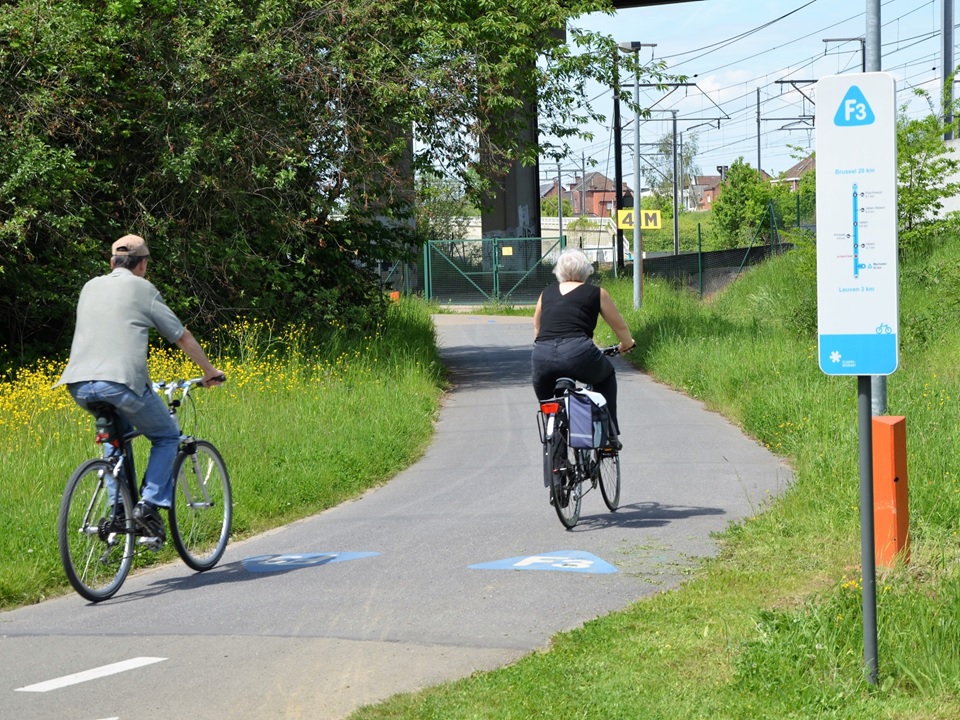
F3 cycle highway – along and across TEN-T corridors
The F3 cycle highway connects Leuven with Brussels, most of the time following service roads built as a part of a TEN-T railway upgrade. But several investments have been necessary to fix gaps resulting from missed opportunities. The most difficult and expensive is crossing another TEN-T corridor – the ring-road of Brussels. What lessons from the history of F3 can we take into the upcoming revision of the TEN-T guidelines?
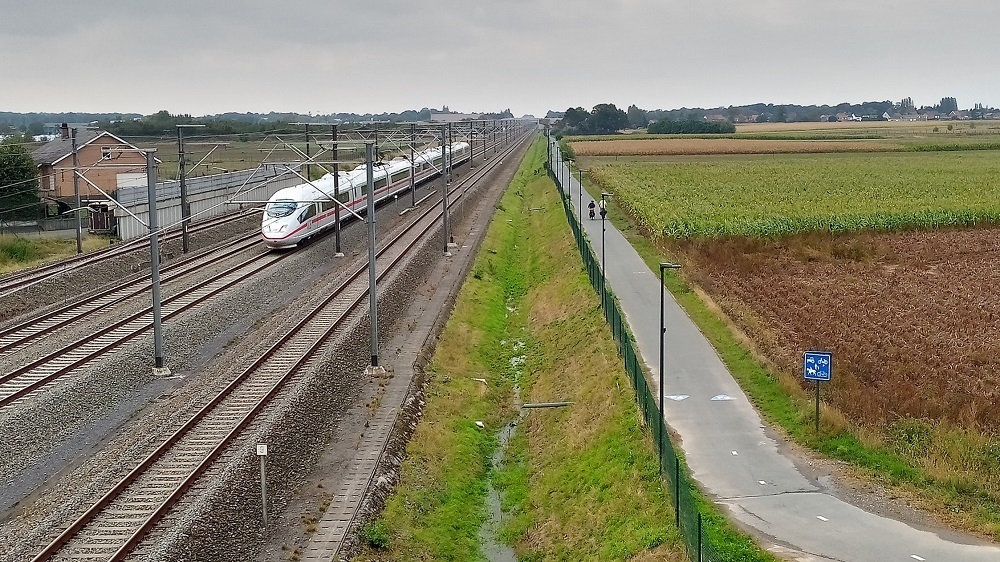
The railroad line from Brussels and Leuven was rebuilt between 2002 and 2006 as a part of high-speed connection between Belgium and Germany and a core corridor of the trans-European transport network (TEN-T). The works cost 455 million euro and included upgrade from double to quadruple track, demolishing and rebuilding many bridges, as well as constructing service roads along the upgraded line. Quickly it became obvious that these roads, with very low volumes of motorised traffic, are also useful for cyclists commuting between municipalities along the railway. By 2012 a cycling “HST-route” was signposted along the high-speed train line. Around the same time, technical studies started how to fix gaps resulting from missed opportunities during the railway upgrade.
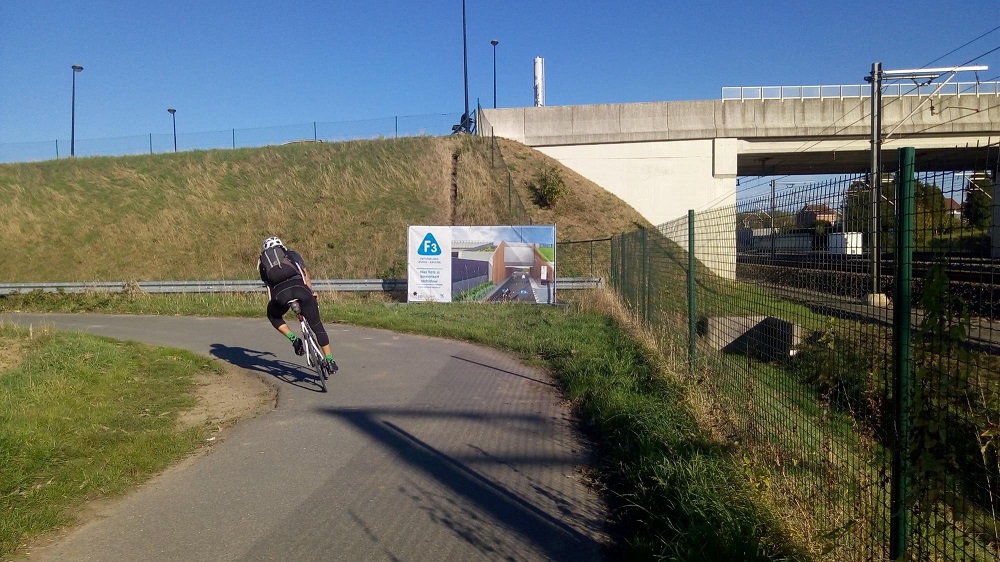
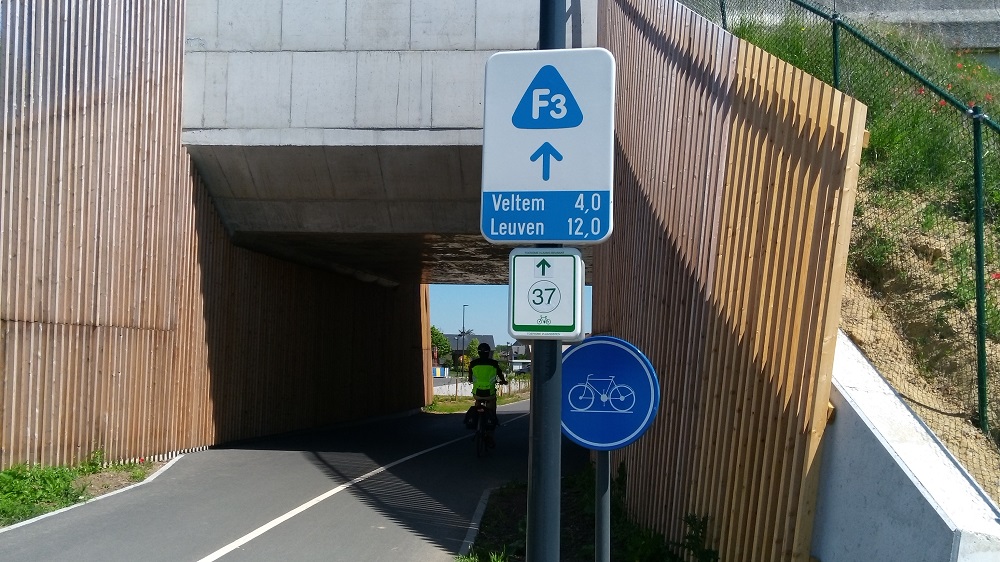
Later, the HST-route became the F3 cycle highway – part of the Flemish network of fast cycling routes. Several sections have already been improved, for example in the municipality of Kortenberg two tunnels were built to ensure direct and safe crossings under roads passing over the railway. A new section of cycle path between the Kortenberg train station and Everbergstraat provides another comfortable shortcut, cutting the distance by of 300 m. In June 2020, a long-awaited construction of cycling bridge over the Brussels ring-road (a TEN-T road) started, with the aim to finish in August 2021. Currently cyclists or pedestrians willing to travel from Zaventem to the busines district in Diegem need to make a kilometre-long detour and cross the ring-road by dangerous Hector Henneaulaan with no cycling or walking infrastructure. The new bridge, just next to the railroad bridge, will fix the missing link. Further on, in Brussels, Beliris is commissioning a feasibility study for continuation of the cycle highway towards the Schaerbeek station and the city centre.
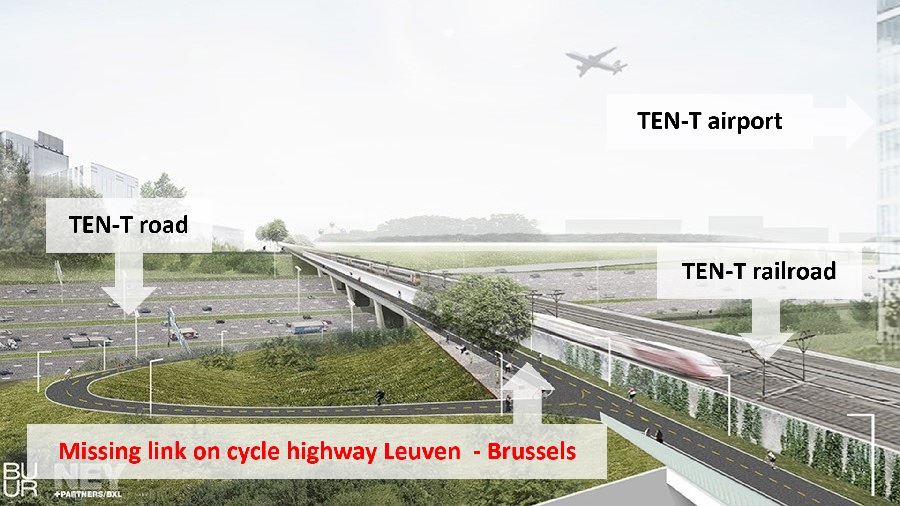
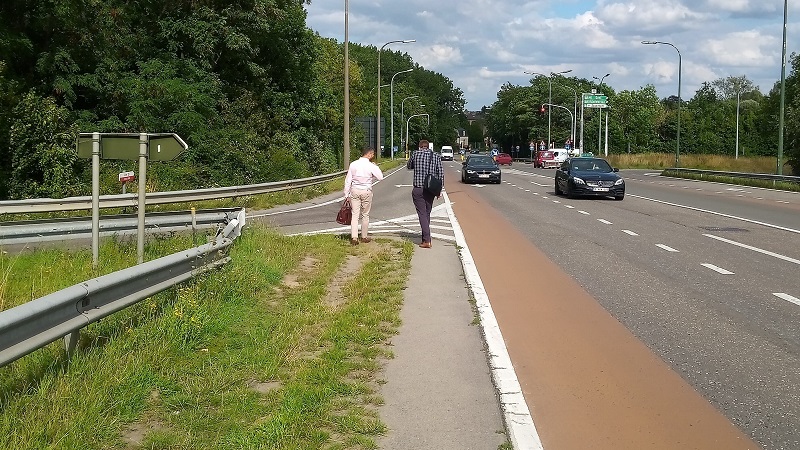
It seems that the story of the Brussels – Leuven railway project will have a happy ending. It is already an example of good practice: adapting service roads for cycling traffic contributes to meeting the TEN-T objectives: efficiency and sustainability. But most of the construction works on F3, especially the most expensive bridges and tunnels, could have been done much easier, cheaper and with less disturbance for all the different users of the transport system, if only they had been integrated in planning and design of the railway upgrade project from the very beginning. The cycling bridge to cross the Brussels ring-road – an artificial barrier created by a TEN-T corridor – will cost 24 million euro, more than all the other works on the 26-km route together.
ECF advocates better integration of cycling in the upcoming revision of the TEN-T guidelines, to make sure that the future TEN-T projects do not create barriers but are used as an opportunity to improve conditions for active mobility. At the planning stage TEN-T infrastructure projects should investigate the potential of cycle traffic in the adjacent area and incorporate necessary elements of cycling infrastructure in the design of a road, railway, or inland waterway. Depending on the corridor and the area, this should include one or both of:
- Route along the TEN-T corridor. As the example of F3 shows, this can often be easily provided for with so-called service roads – built anyway for emergency, maintenance, or to maintain access to housing or fields along the corridor.
- Sufficient density of safe and comfortable crossings across the TEN-T corridor. Problems with crossing the Brussels ring-road demonstrate that opportunities missed during large infrastructure projects are complicated and expensive to fix.
Regions:
Network/Project Involved:
Contact the author
Recent news!
Upcoming events
Contact Us
Avenue des Arts, 7-8
Postal address: Rue de la Charité, 22
1210 Brussels, Belgium









